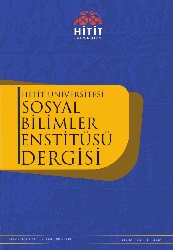Sosyo-ekonomik göstergelerine göre ECO üyesi ülkelerin hiyeraşik kümeleme metoduyla kümelenmesi
Clustering the Eco Member Countries based on Their Socio-Economic Indicators by using the Hierarchical Cluster Analysis Method
Author(s): Selahattin Kaynak, Yalda RashidSubject(s): National Economy, Economic development, Socio-Economic Research
Published by: Hitit Üniversitesi Sosyal Bilimler Enstitüsü
Keywords: Socio-Economic; the ECO Member Countries; Hierarchical Cluster Analysis Method;
Summary/Abstract: Socio-economic development involves the processes dealing with economic growth along with structural and human development. In research studies carried out in order to investigate and compare the development levels of countries, regions, and provinces, mostly, socio-economic and cultural parameters demographics, health, education, culture, income, employment, poverty, life quality and environment are used. The aim of the current study is to cluster the Economic Cooperation Organization (ECO) member countries on the basis of their socio-economic indicators by using the hierarchical cluster analysis method. Economic Cooperation Organization (ECO), an international organization, was established in 1985 to sustain the economic processes of the member countries. Depending on their socio-economic indicators, Turkey and Iran are the most developed countries of the ECO. As to Afghanistan and Pakistan, they fall into the cluster of least developed countries by sharing lots of similarities in terms of their socio-economic indicators.
Journal: Hitit Üniversitesi Sosyal Bilimler Enstitüsü Dergisi
- Issue Year: 13/2020
- Issue No: 1
- Page Range: 69-81
- Page Count: 13
- Language: Turkish

